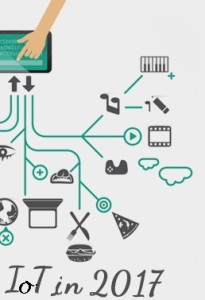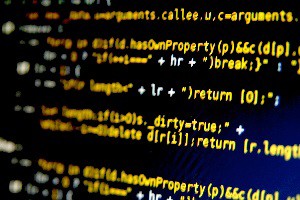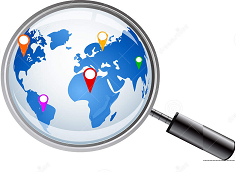
Arquivo para October, 2016
The Web 4.0 emerges?
The initial impulse of Tim Berners-Lee to create in the mid-90´s a protocol on the Internet (Web and Internet are different) was to spread more quickly scientific information, then we can say it was a Web-centered information.
protocol on the Internet (Web and Internet are different) was to spread more quickly scientific information, then we can say it was a Web-centered information.
The Web quickly became popular, then the growth of concern for the Semantic Web has Berners-Lee, James Hendler and Ora Lassila published the inaugural paper emantic Web: new form of Web content that is meaningful to computers will unleash a revolution of new possibilities further development there was designed as knowledge representation, ontologies, intelligent agents and finally an “evolution of knowledge.”
Web 2.0 had the initial feature interactivity (O’Reilly, 2005) where users become more free to interact in web pages and can tag, comment and share documents found online.
The article pointed the way of ontologies as a way “natural” for the development and add meaning to information in the Semantic Web, with methodologies from the Artificial Intelligence, which in the eyes of James Hendler (Web 3.0) went through a “winter” creative.
But three integrated tools just indicating a new path: ontologies helped build simple organization called knowledge schemes (SKOS – Simple Organization of Knowledge System), a database for consultation, with a language called SPARQL and what was already basic Semantic Web, which was the RDF (Resource description Framework) in its simple descriptive language: XML.
The first major project was the DBpedia, a database proposed by the Free University of Berlin and the University of Leipzig in collaboration with OpenLink Software project in 2007, which was structured around the Wikipedia, using 3.4 billion of concepts to form 2:46 RDF triples (resource, property and value) or more simply subject-predicate-object, indicating a semantic relationship.
There are several types of Intelligent Agents in development, little or no use “intelligence” of Web 3.0, there will be in the future new developments? We pointed out in a recent article Semantic Scholar Tool Paul Allen Foundation, but also the connection to the Web 3.0 (projects related to linked data) is not clear.
2016 definitely has not been the year of the Smart Web, or if you want the Web 4.0, but we are approaching, personal assistants (Siri, Cortana, the “M” of Facebook), home automation (Apple Homekit, Nest), recognition image and driverless cars are right there around the corner.
Home automation is the home smart features, this field AI grows fast.
Hermeneutics in Paul Ricoeur
After trying to understand hermeneutics in a row: F. Scheleimacher (1768-1834), Martin Heidegger (1889-1976) and Hans-Georg Gadamer (1900-2002), I wondered what was Paul Ricoeur vision about this (1913-2005) ?
(1768-1834), Martin Heidegger (1889-1976) and Hans-Georg Gadamer (1900-2002), I wondered what was Paul Ricoeur vision about this (1913-2005) ?
I found it in one book, what a relief, The Conflict of Interpretations, in an excellent Portuguese publication of Porto Publishing, although other works of Ricoeur make reference to the subject: Theory of interpretation and an essay on Freud.
It begins by presenting the problem clearly: “If a text can have multiple meanings […] it is necessary to resort to a much more complex meaning notion than that of said univocal signs that an argument of logic requires […]. Consequently, hermeneutics could not remain a technical expert […], it brings into play the general problem of understanding. “(Ricoeur, no /year, p. 6) remember the” interpretation of the text “in elementary school.
Unlike Dilthey who saw the performance as “transportation between two psychic lives” Ricoeur goes beyond life lived to the “understanding of modes available at a time: myth, allegory, metaphor” (. Ricoeur, s / a, p) allowing hermeneutics more “complete”.
It goes beyond also the “way short” adopted by Heidegger in Being and Time, to formulate an ontology of understanding that “you do not get to it gradually, deepening the methodological requirements of exegesis (sic), history or psychoanalysis: Moved to her by a sudden reversal of the problem. “(Ricoeur, s / a, p.8)
I share the observation of exegesis because even if you do a thorough analysis of a word, its etymology and even its historical context, lack the life experience, this is the only true universal and philosophical hermeneutics, which springs from life, but ” living. ”
In Ricoeur’s view, Heidegger never intended to analyze a particular one, “he wanted to retrain our eye and redirect our gaze; he wanted subordinássemos historical knowledge to ontological understanding, as a form derived from an original form “(Ricoeur, s / a, p.12), making a metaphor as like Ricoeur, change the glasses.
Otherly (another book Ricoeur), its ontology is a militant ontology, based on the historical knowledge will come through interpretation, the ontological level, not only of being, but the Other Self.
We can call Ricoeur route long road, part of understanding the language, that is, you want to understand the signs that make up the culture before understanding its own ontological status, but must be careful reflection as an intermediary between these two stages, “reflection is blind intuition is not mediated by what Dilthey called the expressions in which life objectifies” (Ricoeur, no / year, p.19), said thus:
“The guy who plays in interpreting the signals is no longer the cogito: is an existing one that discovers, the exegesis of his life, which is put into being even before sunset and to own. Thus, hermeneutics would find a way to exist that remain from end to end be interpreted. “(Ricoeur, no / year, p. 13)
RICOEUR, P. O Conflito das Interpretações: Ensaios de Hermenêutica. trad. port. Artur Morão. Porto: Rés-Editora, no/year. (pages notes in portuguese edition).
(Português) Pontos da IoT para 2017
IoT points in 2017 The company’s technological forecasts Gartner analyzes because the IoT (Internet of Things) has not yet kicked off, and points out some points that can make this internet happen in 2017:
because the IoT (Internet of Things) has not yet kicked off, and points out some points that can make this internet happen in 2017:
IoT security
The IoT has introduced a range of new security risks and challenges for the devices, their platforms and operating systems, communications and even systems which may or must be connected. Safety is something complicated by the fact that “things” have individual processors and their own systems, such as batteries, operating systems and devices that heat.
IoT Analytics
Analyze performance and functions in “things” is different to do on computers or smartphones because the business model is modified to the extent that will analyze information collected by things not by customer in ultimately are people, new tools and algorithms analysis are under development, but it is believed to be stable around the year 2021 should go to developing as needed.
IoT management
“Things” delay duration are not trivial, require management and monitoring.
This includes monitoring devices, software and firmware updates, diagnostics, analysis and reporting of accidents, which may cause problems in scale to the management task.
We highlight these three essentials, but now will have others that Gartner notes: Processors management in wider areas with internet connection, processes and low-power processors, platforms and operating systems for the IoT, and finally Standards and Ecosystems for IoT.
More detailed analysis is in the Gartner report ““Top 10 IoT Technologies for 2017 and 2018.”
e-Estonia: a digital country
Since its independence from the former Soviet Union (20 August 1991),  Estonia decided it would be a country that would remain connected, decentralized, on an open platform infrastructure and a continuous process to keep improving, calling it four principles in its site.
Estonia decided it would be a country that would remain connected, decentralized, on an open platform infrastructure and a continuous process to keep improving, calling it four principles in its site.
The two key points of this e-citizenship is the identity card or e-ID and decentralized connection called infrastructure X-Road, they open the door to all state services, social and economic data, and the eID identification able to verify the identity of a person around the online environment.
The people of Estonia are the source of the Phoenicians, but are intimate and ethnically related to Finnish and Sami (northern Norway), so with historical links to all of Scandinavia, and the port of Tallinn as its capital and largest city, with the all over the country about 1 million and a half inhabitants.
With this economy has benefited from the strength of the electronics and telecommunications sectors and strong trade ties with Finland, Sweden, Russia and Germany.
The system of government is parliamentary with a Congress of 101 deputies elected directly by the vote of the citizens.
Estonia joined the European Union on 1 May 2004, while Latvia and Lithuania, has a GDP of US $ 35,398, which gives a per capita income of $ 26,000.
The Web can change more?
The new changes around parallel institutions, we will comment one of them today, JQuery, seems to point to deeper changes in the Web 3.0 Web (linked data) and Web 4.0 (intelligent agents).
point to deeper changes in the Web 3.0 Web (linked data) and Web 4.0 (intelligent agents).
JQuery went on to become Founding JS, to support and governance to the projects that are developed from JavaScript, the Foundation is an initiative Linux but with companies like IBM, Samsung and Sauce Labs and many others.
The Executive Director of JS, Kris Borchers, stated that “for a long time, we have offered support to the JQuery community, and the new brand aims to reflect this reality,” but now according to his words, “Center of gravity” is the open standard JavaScript.
The changes will come because the projects (23 total), among them the test frameworks Appium and Mocha, the Dojo Toolkit, linting utility (verification code to identify errors and problems) ESLint, JerryScript.
This new institution will promote widespread adoption and permanent solutions development JavaScript, and related technologies, facilitating collaboration with the community.
The founding members of JS, as former members of the JQuery, were IBM, Samsung, Sauce Labs, Bocoup, Ripple, Sense Tecnic Systems, SitePen, StackPath, the University of Westminster and the WebsiteSetup.
The Brazil has a very active JS community and his designs can be seen on its site.
Is possible hermeneutics today?
Diffuse theories and semi-theories, the latter for the most part, I call semi-theory not one that is incapable of hermeneutics not to fall in tautological error, one that is able to interpret a theory the closest to what the author wanted to say.
I call semi-theory not one that is incapable of hermeneutics not to fall in tautological error, one that is able to interpret a theory the closest to what the author wanted to say.
Semi-theory is simply the reading part of a theory making a cut by peripheral aspects and disregarding plants, for example, a reading of Hegel from only the Phenomenology of Spirit without the elements (or principles) of Philosophy of Law, as not form a whole, or ignoring an important part of their work in Science and Logic (1812-1816) and Encyclopedia of Philosophical Sciences (1817-1830).
Hermeneutics was referring in classic interpretation of the Bible, it may seem that this is why the philosophical hermeneutics, which began in Heidegger and based on Gadamer, has sought in Scheliermacher, biblical hermeneutics, which stated that: “The feeling of immortality and faith immortality founded on the “union of the immortality of the essence of God with human nature in the person of Christ.”
This would seem an opportunistic link between religion and philosophy, but not exactly, although the link exists, but the fact that for Scheleiermacher religion is man’s relationship with the Totality (the Whole), and the All also relate with metaphysics and morality, the interpretation of non-biblical texts can also be made in this relationship with the whole.
The Scheleiermacher purposes are universal, and that he can speak of a universal hermeneutics that was supposed above particular hermeneutical: the Bible, the law and social sciences; thus: “I assume that the misunderstanding is a usual result (Scheleiermacher, 2005, p. 22), aims to” understand the statement at the beginning as well as your actor, and then better than he “(Scheliermacher, 2005: . 23) and it “depends on the talent for language and a talent for the knowledge of individuals (Scheleiermacher, 2005, p. 11).
Better understand the author to explicating what is unconscious in the author’s creation process, which takes place both the objective position on the subjective in their speech or writing objectively learning the language as the author possessed, and subjectively learning about life and contextual conditions of the author’s life.
Scheleiermacher point out that there are two kinds of talents that are rarely found in one person: the grammatical accuracy and possibilities of expression, for example, the use of analogies and metaphors.
We can now ask whether it is possible for an interpreter to reconstruct the author’s creative process, he must first find out the process that led the author and with the creative process is a unit, and to discuss the interpretation identify the divination process and comparative leading the author of a given text.
Understand the divination process as one that “in us, so to speak, we become the other person and try to understand the individual element directly (Schileimacher, 2005, p. 92).
Scheleimacher, F. Hermeneutica e crítica. Vol 1. Brazil, Ijuí: Unijuí, 205.
What is hermeneutics?
If you have to define “hermeneutics” in simple terms, I would say that is an interpretation of fact, the word interpretation is more common in Portuguese that hermeneutics, being linked to correction biblical interpretation made by Schleiermacher (1768-1834), as he intended to be the first to unify the various hermeneutical theories of specific disciplines in a universal hermeneutics.
simple terms, I would say that is an interpretation of fact, the word interpretation is more common in Portuguese that hermeneutics, being linked to correction biblical interpretation made by Schleiermacher (1768-1834), as he intended to be the first to unify the various hermeneutical theories of specific disciplines in a universal hermeneutics.
For Schleiermacher, hermeneutics is the art of understanding the spoken and written language, and it assumes that misinterpretations occur constantly, and since writing is connected to the author’s language, he made a division into two parts: a grammatical interpretation which deals with the semantic and syntactic comprehension of language, and the technical or psychological interpretation that deals with the thinking of the author, as he developed his thoughts.
It was a decisive influence on the thinking of Hans-Georg Gadamer, and the second also on hermeneutics Wilhelm Dilthey (1833-1911) scholar Schleiermacher, but whose central project was to create a unique methodology for the human sciences, as the method of so called “natural science” is not appropriate for the humanities.
Martin Heidegger (1889-1976) combines the phenomenological research method of Husserl with aspects of the theory of understanding Dilthey’s life, besides the influences mentioned in previous posts (Plato, Aristotle, Leibniz and Eckhard Master) also want to point out now, once seen the importance of Hegel, outside the sphere of reason, Sφren Kierkegaard and Friedrich Nietzsche, Heidegger will say we have stated that we need to know the meaning of being, and particularly of being human beings before discussing our understanding of the entities.
A careful description of what human beings are in real life, does not allow an idealistic project or a materialistic consumerist or even cut, it is to know what we as self-interpretive understanding that we have of our trip.
The hermeneutics of the project is abandoned in Being and Time, but the hermeneutic circle which Hans-Georg Gadamer (1900-2002), which says provocatively that Heidegger’s hermeneutics has understanding of previous structures, which are “prejudices” but we then think that there are also positive prejudices that lead to correct interpretation.
The hermeneutic understanding occurs when the text of the last horizon with the horizon this one who interprets and understands merge, it is the horizon now expanded interpreter is in germ in Heidegger, Gadamer in method.
Metaphysics and philosophy of history
Deepening of Heidegger in the classical antiquity, Plato and  Aristotle, the scholastic Augustine of St. Thomas, and the reading of Kant, Hegel and even idolized her master Husserl, was the German academy of the 1950s, at the end of the 2nd. World War II, “get fully way and not retain anything of what until then was shown as valid” (Gadamer, p. 306), and this happened “in that Heidegger accept the Aristotelian critique of good idea and turned to fruitfully, particularly stressing the Aristotelian concept of analogy “(Gadamer, p. 307).
Aristotle, the scholastic Augustine of St. Thomas, and the reading of Kant, Hegel and even idolized her master Husserl, was the German academy of the 1950s, at the end of the 2nd. World War II, “get fully way and not retain anything of what until then was shown as valid” (Gadamer, p. 306), and this happened “in that Heidegger accept the Aristotelian critique of good idea and turned to fruitfully, particularly stressing the Aristotelian concept of analogy “(Gadamer, p. 307).
Do not do this without the necessary historical update on the issue of historical consciousness introduced by Hegel, where “the Hegelian conception of history of philosophy he was already quite like philosophy, as a separate part within the philosophy of history, which sought to demonstrate in turn the presence of reason also in history (Gadamer, 399).
Ontological resumption of Heidegger, should resume the language of metaphysics as a question, and in a way confused with Hegel asks so Gadamer, “will be the new radicalism with which Heidegger aroused the oldest philosophy of questions for a new present to conclusive figure of Western metaphysics …? or will that was the circle of reflection philosophy that paralyzed all hope of freedom and liberation and forced Heidegger’s thought to take over your life? “(Gadamer, p. 307).
It should be as answers Gadamer, on the one hand share with Hegel the host of the story at the very point of philosophical departure, and other “secret dialectic and not unraveled, which is embedded in all the essential statements of Heidegger” (Gadamer, p . 308).
In the thought of temporal Heidegger the man, he “seems to claim for himself a genuine historical self-consciousness, yes, even a self escotologicamente* marked” (Gadamer, p. 308).
The second critical issue, pointed out by Gadamer in the work of Heidegger, it is what is called as “being” and seeks to interpret the tautology of being that is immediate mediation, which according to Gadamer would be a “second immediacy concealed” (Gadamer, p. 309)
But the central question that refers to the subject of the metaphysical language, is to resume the Aristotelian question of Leibniz and Schelling, “because there’s before the one and not before anything?” “What is the being of beings” remaking it as a matter fundamental for the current ontological existentialism.
Gadamer, H. G. Hegel, Husserl, Heidegger. Petrópolis, RJ: Vozes 2012. (Brazilian edition)
* Eschatological – what is the ultimate end of humanity, or what you have as the ultimate in self-awareness as intended Heidegger.

